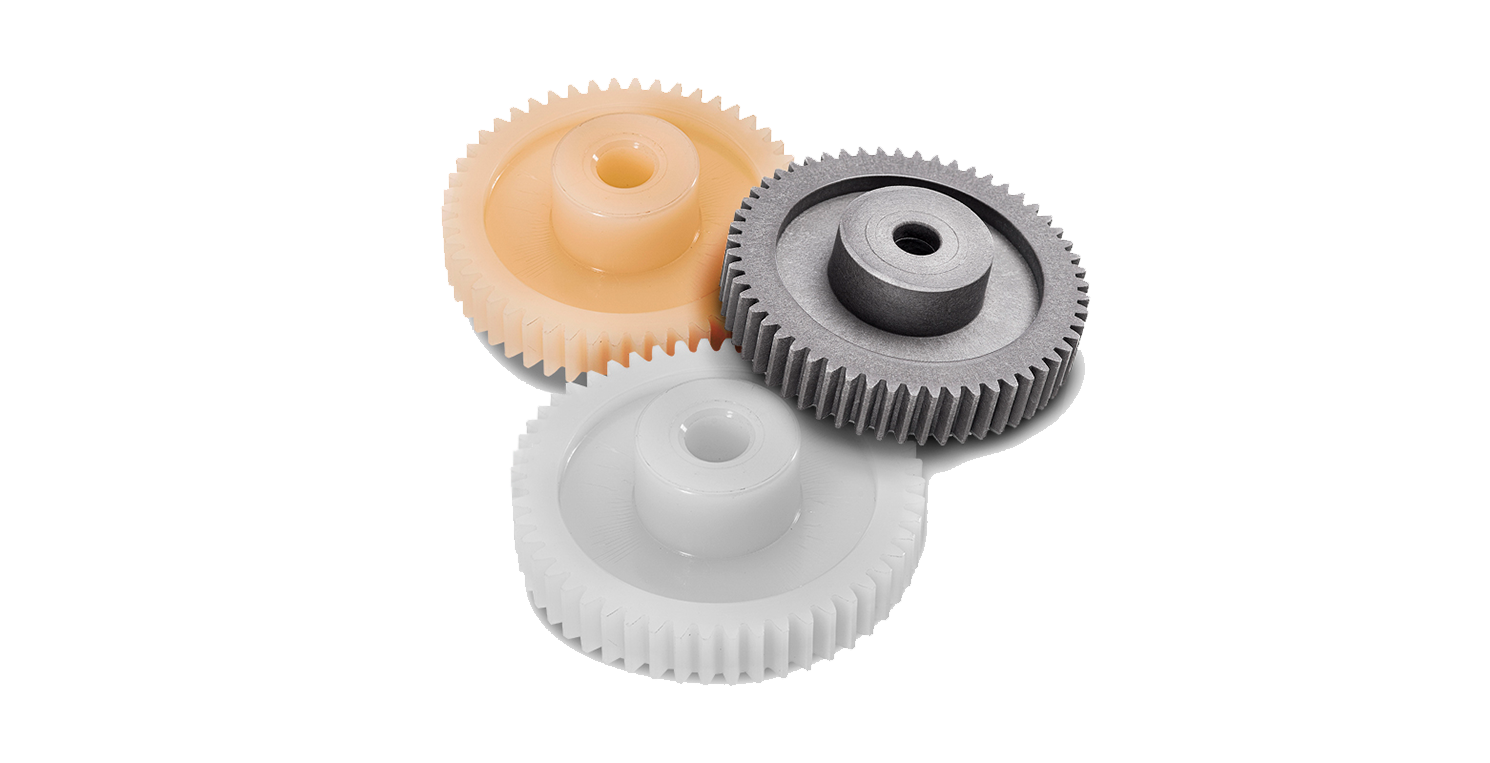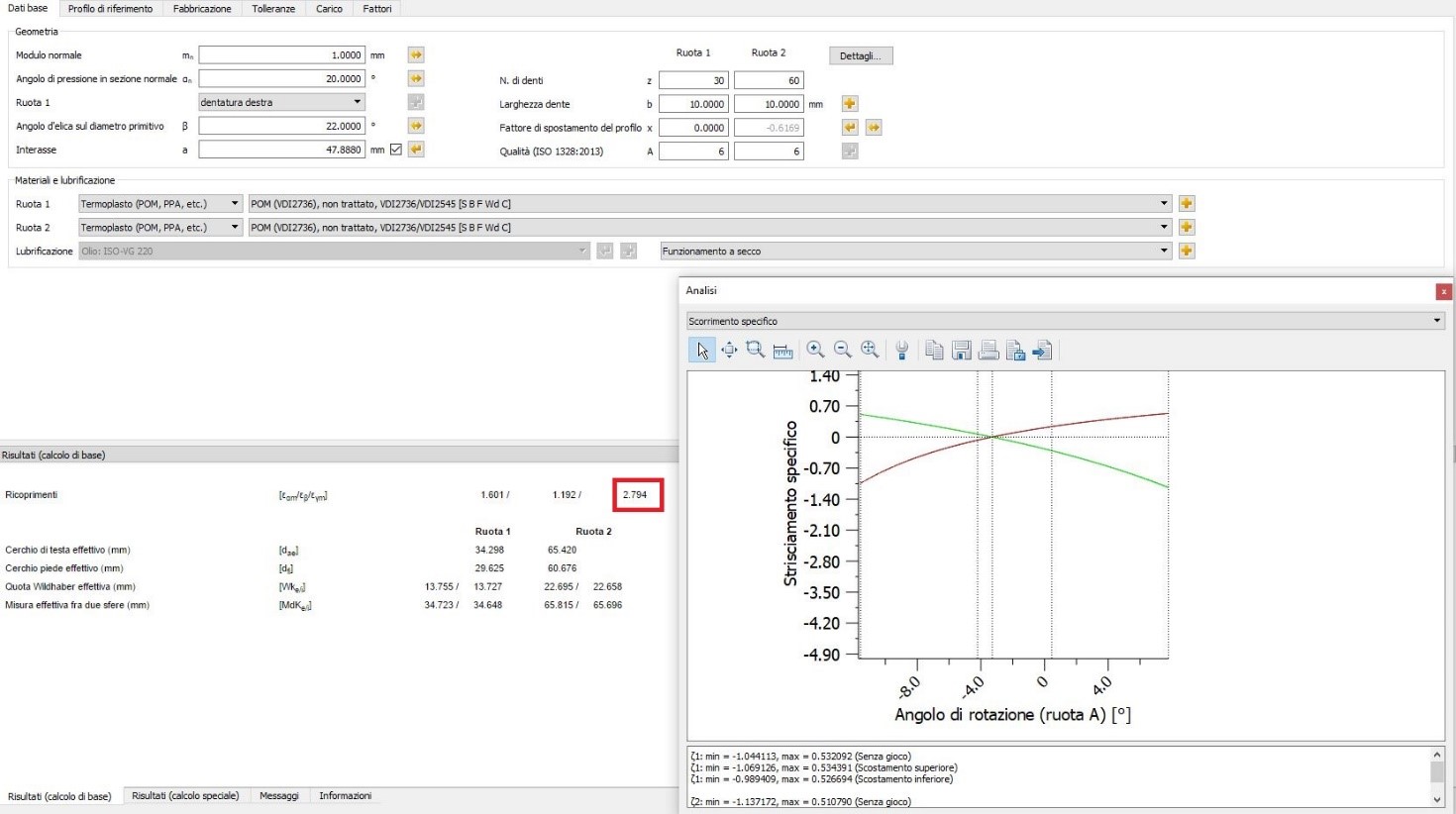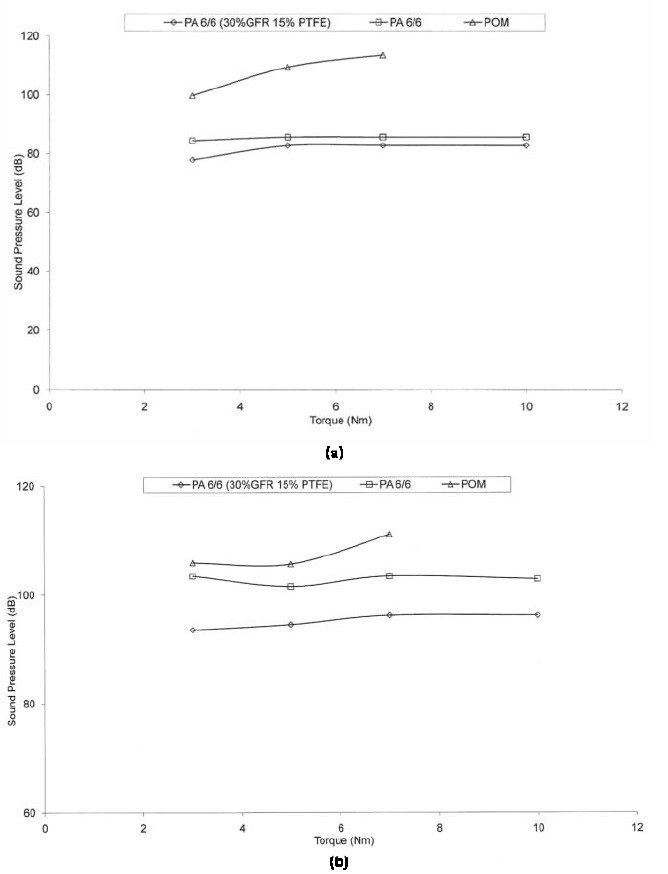Noise reduction in plastic gears.
19 May 2020
Ten years ago, most gear manufacturers didn’t even consider plastic as an option, especially in high power applications. The huge step forward in the search for technopolymers aimed at different applications and the clear advantages provided by plastic gears compared to metal ones has led to a reversal of the trend in the choice of material to produce gears. The advantages are numerous, but what we focus on in this news is that of the noiselessness of the plastic gears.

Compared to metal, plastic gears are much quieter because the teeth of the latter manage to deform, compensating for any misalignments in the rotation. In addition, they have the ability to absorb vibrations. This is due to the intrinsic nature of technopolymers and plastics in general, which makes possible to dampen noise and therefore reduce the transmission of vibrations.
Main causes of noise in the gears.
Let's take a closer look at the potential causes of gear noise:
- Engagement errors: the lack of continuity of transmission in a pair of toothed wheels, i.e. the lack of condition for which two gripping teeth do not completely leave before two other teeth have started engaging, increases the noise of the gears.
- Profile errors: these are involute errors, that is the difference in the real profile of the toothing compared to the theoretical one which can lead to an increase in the noise of the gears.
- Interference:these are the result of the contact between the head of one gear and the bottom of another, greatly increasing the noise.
- Surface finish: roughness must be minimal as the depressions in two overlapping surfaces generate noise.
How to make plastic gears even quieter: Stagnoli has the answer.
Today the challenge is to make plastic gears even quieter. The key to having even quieter technopolymer gears is design, that is, to adopt a careful approach to reducing noise from the earliest stages of design. Stagnoli is a leader in this area thanks to the know-how acquired over the years, the design tools used and the numerous training courses in which its technicians participate. In this regard, in a recent course, fundamental aspects were discussed concerning the reduction of noise in plastic gears: continuity of engagement, specific covering and specific sliding. To clarify these concepts, the image below may be useful.

Fig.1 Specific covering and specific sliding
In general, given a starting condition, to reduce the noise of the plastic gears, it is necessary to:
- ensure continuity of transmission; the gripping teeth must gradually release and, in the same way, the subsequent teeth must begin to engage gradually. In this way the motion transmission is silent, regular, without shocks or vibrations;
- increase the specific covering, i.e. increase the average number of contact teeth during rotation; this favours a more homogeneous distribution of the contact forces;
- decrease the specific sliding that takes into account the frictional forces developed during engagement.
But beyond the pure design, Stagnoli, based on the experience gained thanks to the constant study of the present literature, provides valuable advice to reduce the noise of the gears in the practical field, focusing on the materials and the best types of coupling.

Fig.2 Sound pressure as a function of the torque
The graphs relating to figure 2 are taken from the scientific article Acoustic Emissions from Polymeric Gears by KD Dearn* and D Walton. They show the sound pressure level (SPL) in dB as a function of the torque in two tests at different rotation speeds of three different pairs of gears produced with three different materials (POM, PA and PA+30%FV +15% PTFE). Leaving aside the coupling in POM, the noise levels do not vary with the variation of the torque. PA reinforced with fibreglass and PTFE is the most silent coupling at all tested speeds and torques. The conclusions indicated in the article are as follows:
- of the materials tested, POM-POM coupling is the noisiest combination. Compared to other materials, POM has shown greater sensitivity to torque variations;
- the pair of gears in PA composite material loaded with fibreglass and PTFE, in addition to being independent of the torque, highlights the lowest noise level;
- all couplings of plastic materials with steel produce a low noise of the gears;
- the pair of POM gears in the presence of lubrication provides a low noise level;
- the pair of POM/steel gears does not show substantial differences in the case of lubrication or not.
The article also refers to roughness and, therefore, to the surface finish as one of the causes of the noise of the gears.
In this regard, we invite you to read the article and to contact us if you want to discuss with our technicians in order to design or optimise the plastic gears that improve the silence of your machinery.
NEXT NEWS
23 April 2020
